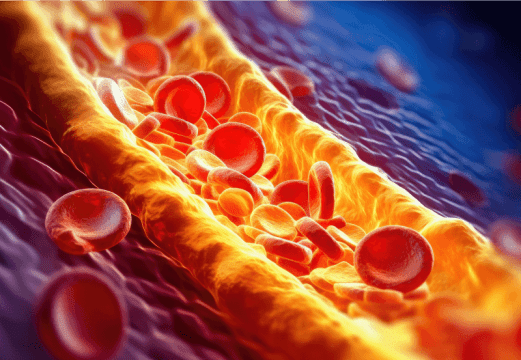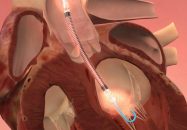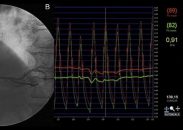At present, severe calcified coronary stenosis poses a significant challenge for PCI. A successful intervention will require plaque modification prior stenting, seeing as sub-expansion has been associated with worse clinical outcomes at followup. The tools normally used to treat these complex lesions include specialized balloons such as cutting, scoring, and high pressure balloons, as well…
ESC 2023 | OCTIVUS TRIAL: Is OCT Superior?
Researchers conducted a multicenter randomized study involving 2008 patients undergoing coronary angioplasty (PCI). In this group, 1005 patients underwent a procedure guided by OCT, and 1003 patients by IVUS. The average age of participants was 65 years, 21% of subjects were women, and there were no significant differences between both groups. The primary endpoint was…
ESC 2023 | ILUMIEN IV: What Is the Benefit of OCT?
Researchers conducted a randomized study that included a total of 1233 patients who underwent percutaneous transluminal coronary angioplasty (PTCA) guided by optical coherence tomography (OCT) and 1254 patients who underwent the same procedure but were guided by angiography. The latter had complex lesions. The initial groups were similar. The average age was 65 years, most…
Long Term Outcomes after Complex PCI According to Operator Experience and Use of IVUS
The use of intravascular ultrasound (IVUS) to guide percutaneous coronary interventions (PCI) has been shown to reduce the risk of major adverse cardiovascular events (MACE) across controlled randomized studies, registries and meta-analysis. Current guidelines recommend the use of IVUS in left main disease and complex lesions. As the prevalence of complex PCI increases over time,…
Are There Sex Differences in pLVAD-Assisted High Risk PCI?
The proportion of patients undergoing high risk PCI (HRPCI) is on the rise. It includes patients with different clinical, anatomical and procedural characteristics, such as low ejection fraction, severe vascular disease, three vessel or left main disease, severe lesion calcification and the use of atherectomy. Mechanical circulatory support devices (MCS) during HRPCI, such as the…
Post PCI Functional Assessment for Focal Lesion and Stent Underexpansion Detection
The use of fractional flow reserve (FFR) and non-hyperemic pressure indices (NHPRs) have become essential for intermediate lesion revascularization. A linear inverse correlation has been recently shown between the use of post PCI physiology and cardiovascular events at followup. However, its adoption has been limited so far, seeing the wide variety of algorithms used in…
Calcified Nodules and the Importance of OCT Categorization prior PCI
TLR associated factors in patients with calcified nodules. Patients with complex cardiomyopathies undergoing percutaneous coronary intervention are increasingly common, as is the case for calcified lesions and calcified nodules (CN). Procedure complexity not only involves planning, but also establishing patient prognosis, taking into consideration the fact that most target vessel events occur at long term…
Useful Predictor of Adverse Events in Complex PCI: BCIS CHIP Score
Among patients undergoing percutaneous coronary intervention (PCI), there is a need for risk stratification for successful planning and post procedural management. Risk stratification is paramount for effective decision making. For a long time, the SYNTAX score has been the preferred tool for complex PCI patient risk assessment. However, it has important limitations, such as inter-observer…
EuroPCR 2023 | Intravascular Lithotripsy (IVL) Balloon in the Treatment of Underexpanded Stents
Calcified coronary plaque (CCP) is a challenge for interventional cardiology. Stent underexpansion (SU) commonly associated with CCP could predispose to stent thrombosis or restenosis. Currently, SU in severe CCP can be treated by rotational atherectomy, orbital atherectomy, balloon cutting/scoring, non-compliant high-pressure balloons, or intravascular lithotripsy (IVL). The aim of this meta-analysis was to determine the…
Post PCI Angina: Inevitable or Avoidable?
Predictors of post PCI angina Among the complications of ischemic cardiomyopathy stenting, those called chronic, with significant functional and mental compromise, might affect patient quality of life. This can be observed in different scenarios, such as instent restenosis and post PCI angina. This kind of complications is associated with anxiety and depression at long term. …
Clinical Impact of Coronary Artery Disease on Results After TAVR
Coronary artery disease (CAD) coexists with aortic stenosis in about half the patients who suffer the latter. These patients receiving antiplatelet therapy are at a higher risk of periprocedural bleeding—one of the most frequent complications in patients who undergo transcatheter aortic valve replacement (TAVR). One way of limiting the risk for bleeding is choosing the…









